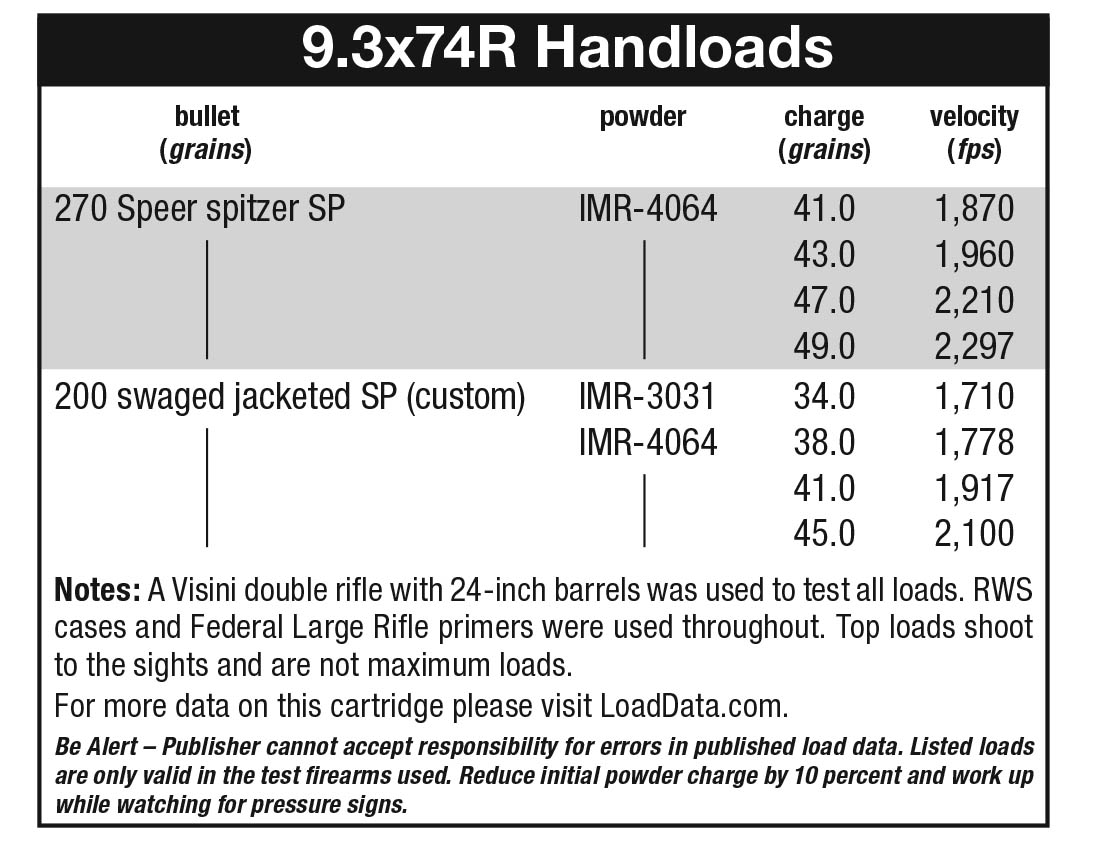Cartridge Board
9.3x74R
column By: Gil Sengel | June, 19
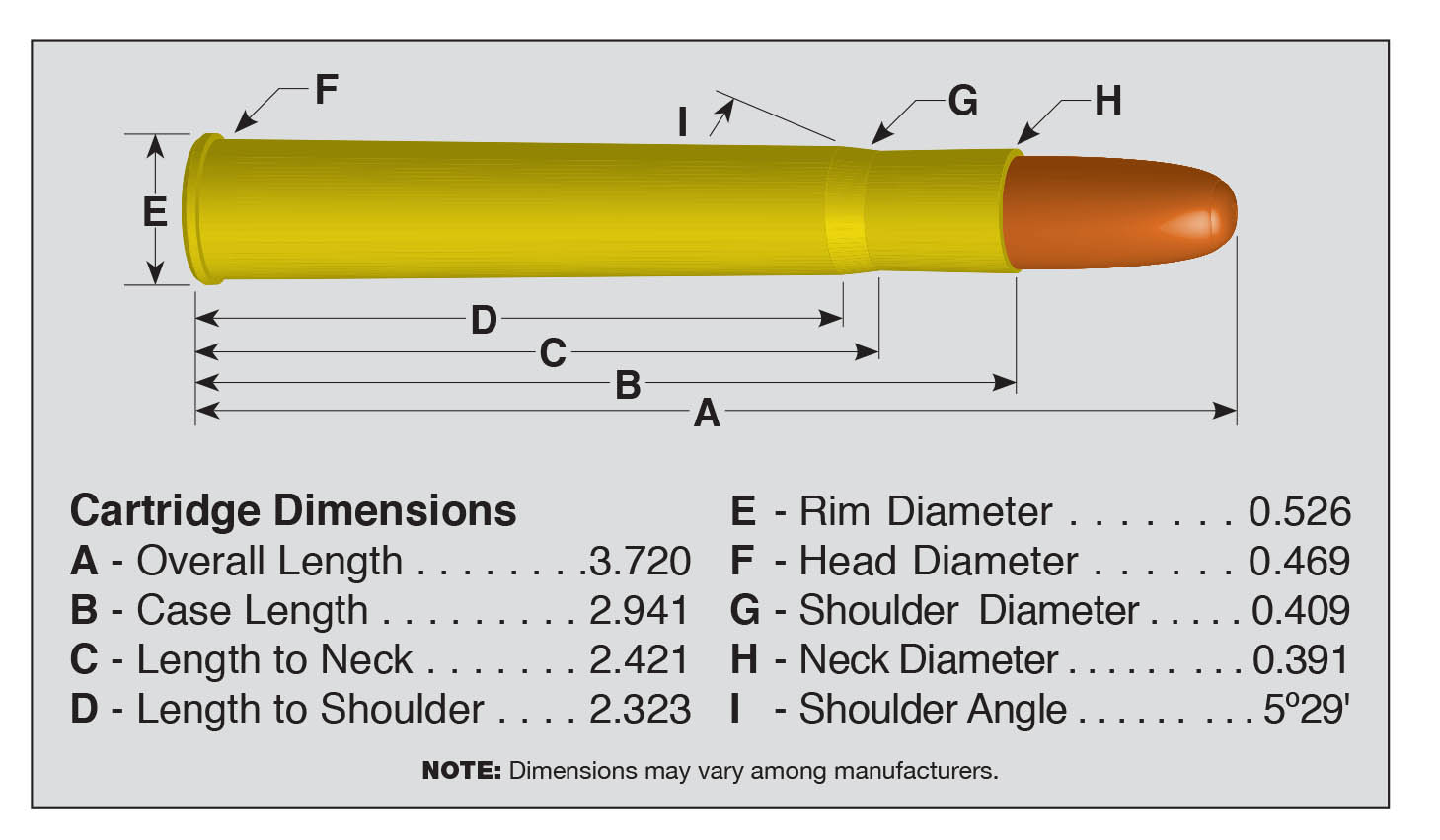
First off, the 9.3x74R (“R” meaning rimmed) is of German origin, introduced around 1900 as a powerful smokeless powder cartridge by Deutsche Waffen- Munitionfabriken (DWM) ammunition works. The 9.3mm figure equals .3661 inch and, in this instance, indicates bullet diameter. Bores of the Perugini Visini & Co. double rifle shown in the photos are .354 inch with grooves of .365 inch. The superb Gebrüder Merkel over/under belonging to friend John Gannaway has .356-inch bores and .366-inch grooves.
Exactly where the 9.3mm bullet was first used seems to be unknown. It’s a bit small for a percussion military rifle, so it may have been of sporting or target size. A series of rimmed, straight-case cartridges with lengths of 36mm to 85mm (1.417 to 3.346 inches) did appear from the 1870s to 1895. All were black powder and loaded with .368-inch diameter bullets. It is important to note that these had case base diameters of 11mm (.433 inch) as opposed to the 9.3x74R, which had a .465-inch diameter, thus positively preventing the hot smokeless round from being used in older rifles.
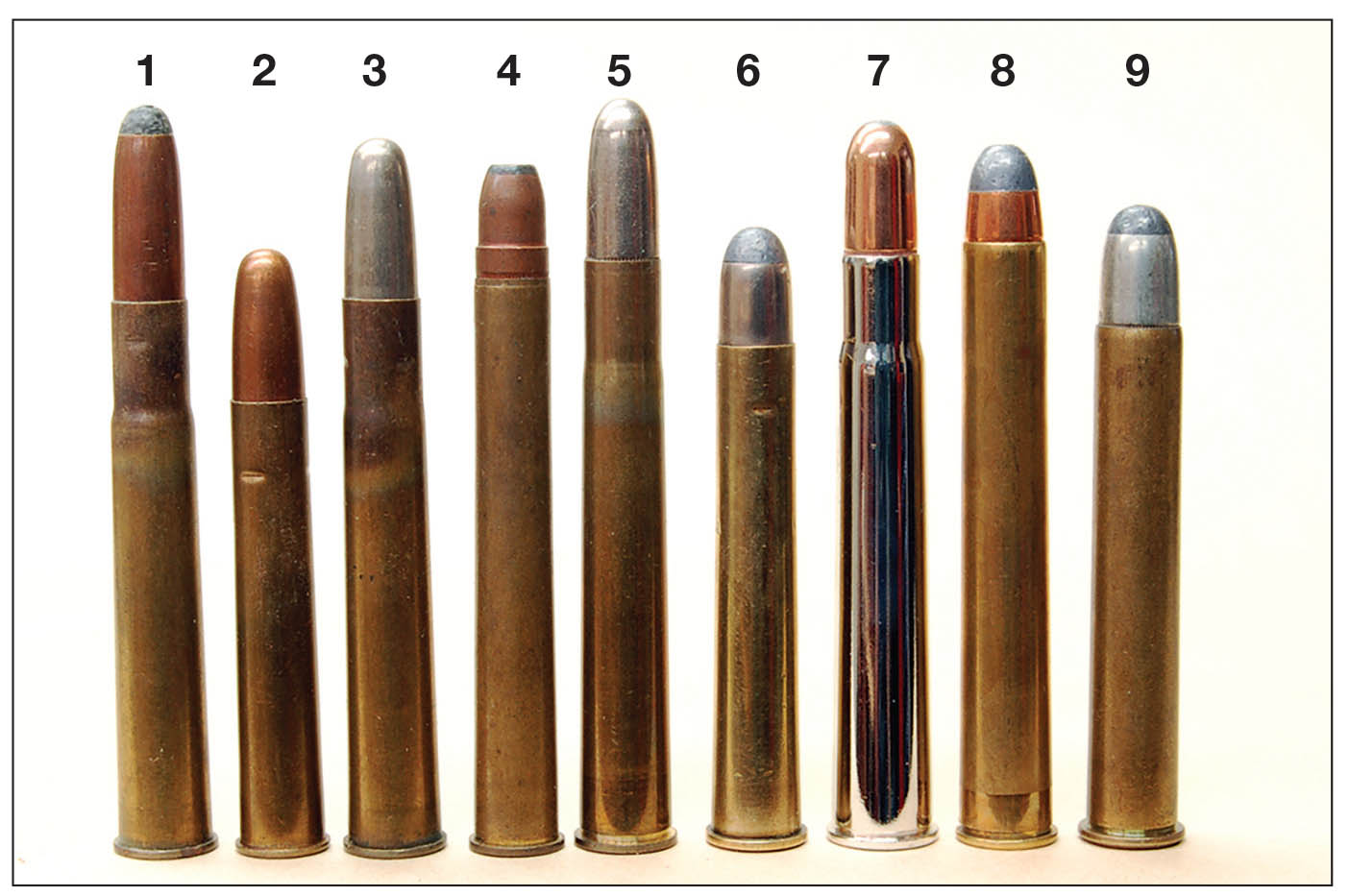
The .400 Black Powder Express was one of a series of .40-caliber cartridges with case lengths of 2 to 3 inches. Timeframe was 1880-1900. However, a year or so before the appearance of the .400/ .360 NE, John Rigby & Co. introduced the .400/.350 Rigby. Its case was the same as the .400/.360 NE but used a .357-inch bullet diameter.
We get another view from W.B. Dixon, who states in European Sporting Cartridges that in 1900, DWM produced a 9x74R round for Max von Förster, who owned a gunshop in Berlin. Then, “It is also quite possible that this case was based on the English .400 Express and paralleled English modification of the .400 case such as English .400/.360 Westley Richards (introduced in England in 1900) and called the 9x70R in Germany . . . [this] lead to the introduction of the popular 9.3x74R.” The year was 1902.
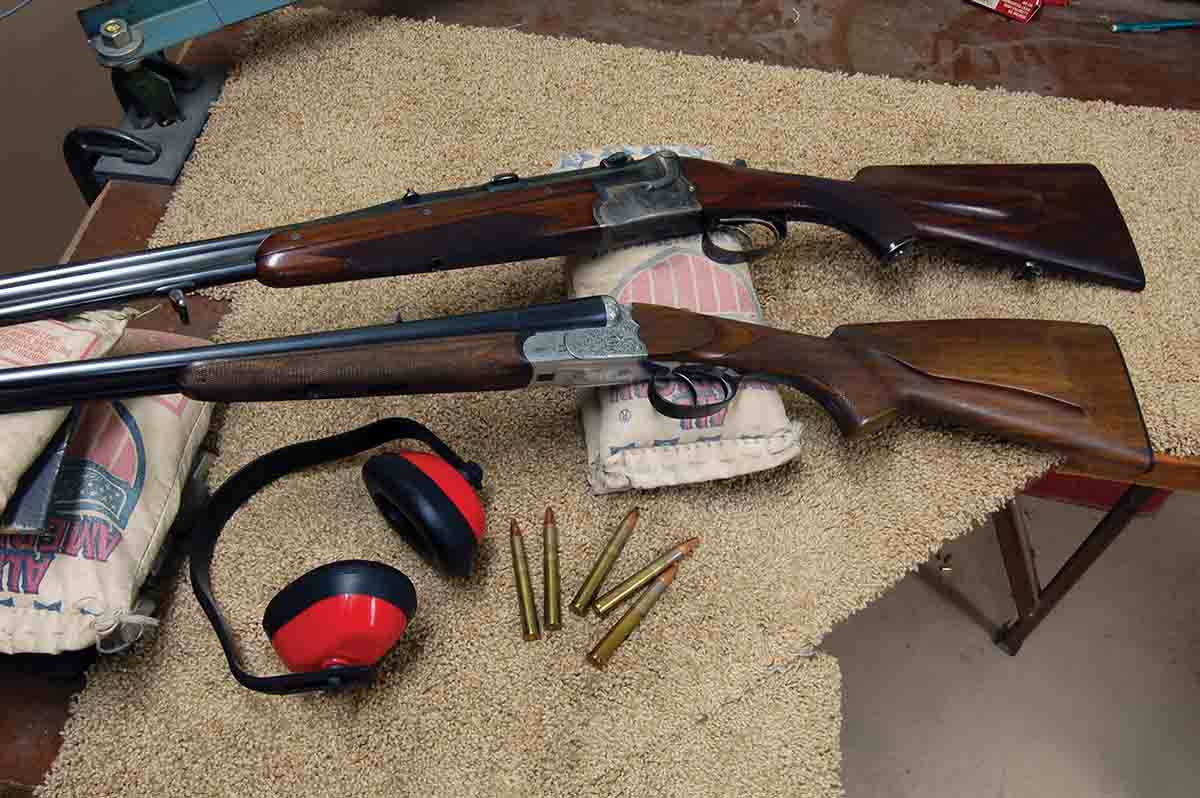
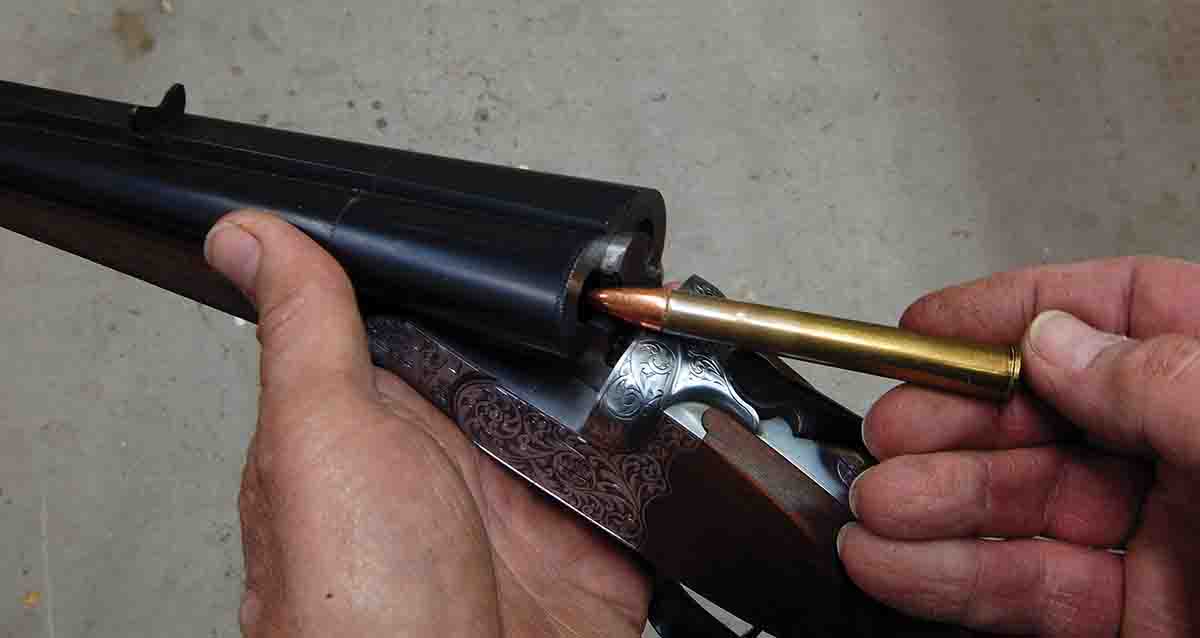
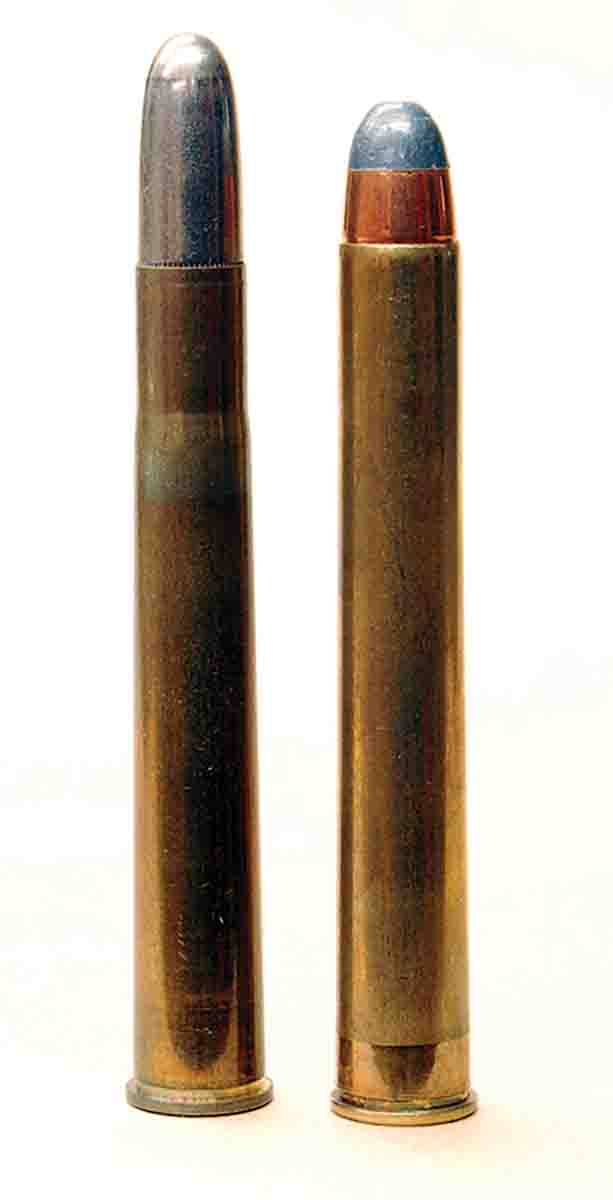
German guns were not only side-by-side doubles, but over/under doubles, break-open single shots and combination guns with one rifle barrel and one shotgun barrel attached side-by-side or over/under. Of course, there was the ubiquitous drilling in which a rifle barrel was fitted under two side-by-side shotgun tubes. Several other three- or even four-barrel combinations were built. Most were “using guns” with little fancy finish.
The British, on the other hand, seemed to want to make “best grade” side-by-sides and a few weird single shots and bolt guns built on the Mauser M98 action. All tended to be more expensive than European guns. That was all the push many buyers needed to look elsewhere.
Pre-1930 data shows at least five jacketed bullets from (all figures converted to Customary system) 225 grains at 2,550 fps muzzle velocity to 285 grains achieving 2,340 fps. Some sources indicate a 224-grain lead bullet at 1,600 fps and a 182-grain jacketed slug at 1,850 fps were also available, apparently to duplicate the old 9.3x72R black-powder round. These four loadings would yield from 1,300 ft-lbs to about 3,500 ft-lbs, adequate for European deer
and wild boar, game in India and Germany’s African colonies, and the wild cattle of several Pacific islands.
When the .375 H&H belted magnum appeared in 1912, it was immediately compared to the 9.3x74R. This was really comparing apples to oranges as the new round had a larger bore diameter, 14 percent greater case capacity and a higher working pressure because it was loaded in M98 bolt guns. When the .375 flanged (rimmed) became available a bit later, its energy figures were about 5 to 6 percent below the belted round, but still about 10 percent greater than the 9.3x74R with similar bullet weights. There is little doubt the belted .375 H&H was designed so that its
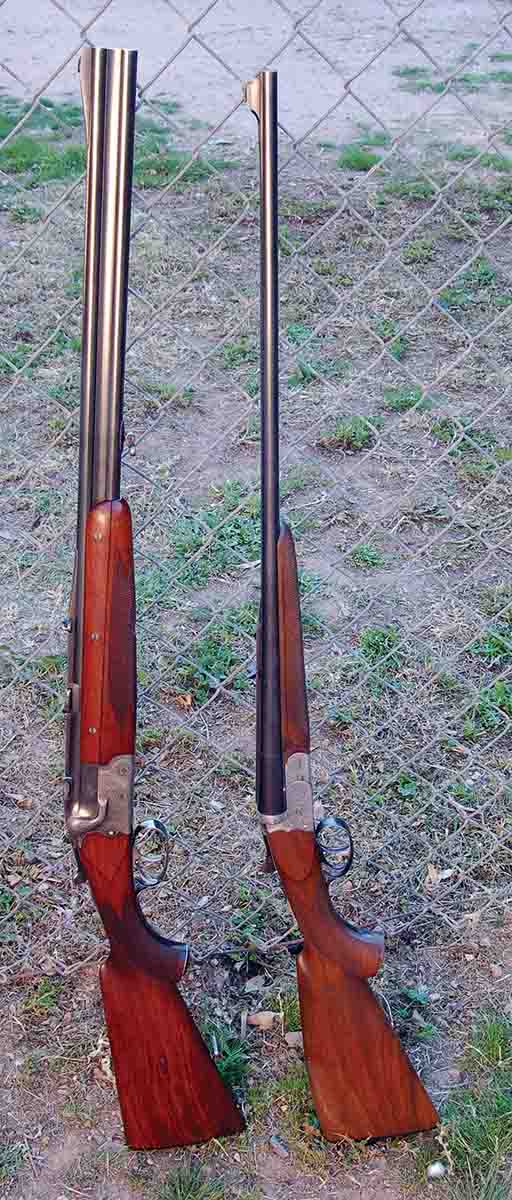
Prior to World War II, European sporting ammunition was hard to find in the U.S., but that changed after the war. By the mid-1950s, Abercrombie & Fitch, Stoeger and Continental Arms Co. were importing nearly 40 different cartridges. Standard bullet weight and velocity for the 9.3x74R did not change, no doubt due to all the double rifles and fixed-sight combination guns that fired it.
Since then, the situation has only improved. Not only is imported ammunition available, but Hornady lists its 286-grain Spire Point at a muzzle velocity of 2,360 fps/3,537 ft-lbs. Federal sells ammunition using three trick bullets from Swift, Barnes and Woodleigh, all at 2,360 fps muzzle velocity. Norma lists three 285-grain bullets with varying jacket thicknesses at 2,362 fps, a 232-grain option at 2,560 fps/3,377 ft-lbs and a 230-grain solid alloy bullet at 2,559 fps/3,345 ft-lbs. Nosler lists a load using its 250-grain AccuBond at 2,550 fps/3,609 ft-lbs.
For handloaders, loading data has gone from virtually none to available everywhere. Hornady, Speer, Swift and Woodleigh manuals come to mind. Certainly there are others. The loads shown here were shot in the Visini double. There has never been any need for others. Be wary of the Internet, however, as I have been shown data that was far too hot for break-open guns – especially those of pre-World War II vintage. Why folks do this is a mystery to me. If a hunter wants a .375 H&H power level then buy a .375 H&H. Don’t destroy something else by overloading it.
The 9.3x74R has been a popular and reliable medium-bore throughout most of the world for longer than any of us have been alive. It seems American riflefolk are finally recognizing what everyone else already knew.



